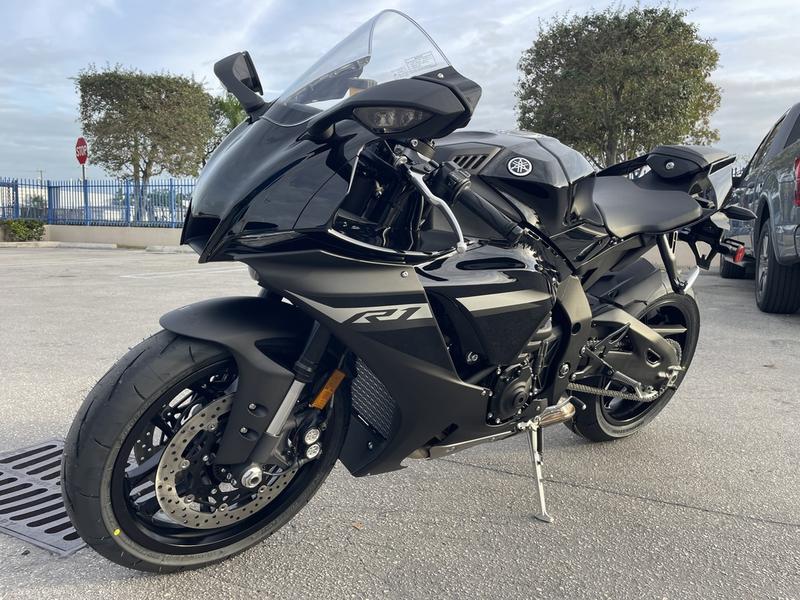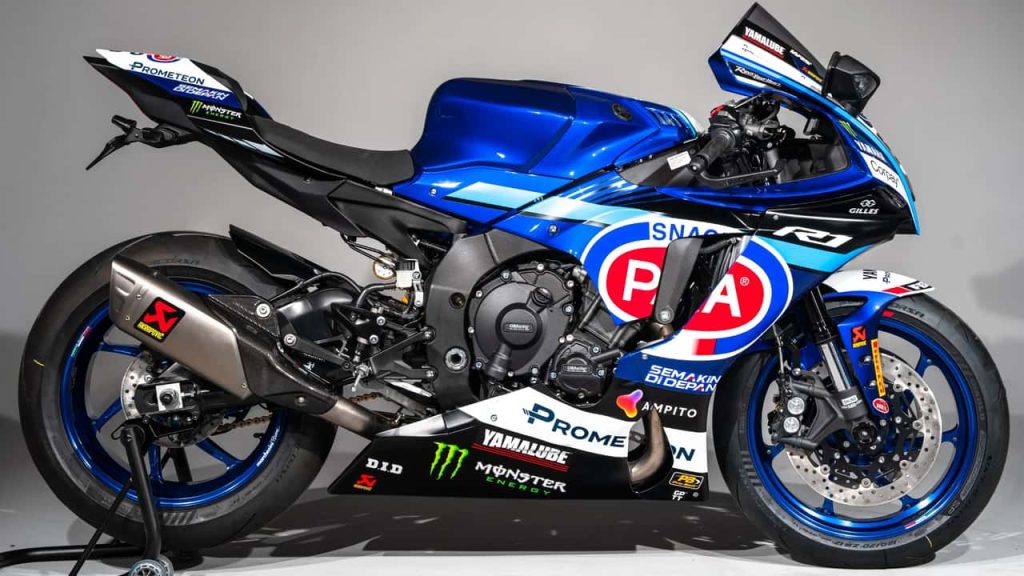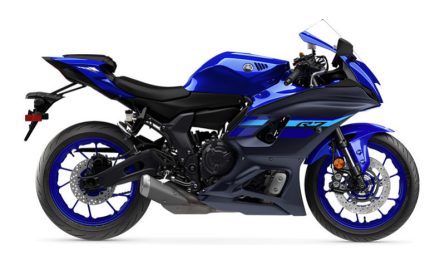The Yamaha YZF-R1 has long been a staple in the world of superbikes, capturing the hearts of riders and enthusiasts alike. In this blog post, we will explore the features, performance, and legacy of the 2024 Yamaha YZF-R1. From its powerful engine to its iconic design, we will cover everything that makes this motorcycle a standout in the competitive landscape of high-performance bikes.

Overview of the Yamaha YZF-R1
The 2024 Yamaha YZF-R1 is a 1000cc superbike that weighs around 450 pounds and boasts nearly 200 horsepower. Priced at approximately $20,000, the R1 is designed for speed, agility, and performance. While it excels on the racetrack, it may not be the most practical choice for everyday commuting. But first, let’s look at what makes the R1 such a legendary motorcycle.
Engine and Performance
At the heart of the R1 is the renowned 998cc crossplane inline-four engine. This configuration sets the R1 apart from competitors like the CBR1000 and ZX10, as it delivers a unique sound and character. Instead of all four cylinders moving in unison, they are 90 degrees offset, providing a distinctive growl that enthusiasts adore.
The engine’s architecture is paired with an aluminum twin-spar frame and a long swingarm, which enhance grip and stability on the track. The base model R1 features KYB suspension, while the R1M comes with Ohlins electronic suspension for added performance. The braking system includes high-quality calipers and steel braided lines, ensuring stopping power when it matters most.
Design and Features
The design of the R1 has evolved over the years, with significant updates in 2020. While the overall silhouette remains iconic, the front bodywork was reshaped for improved aerodynamics. The R1 is equipped with a TFT display that provides vital information to the rider, including gear position, engine temperature, and fuel averages.
One notable feature is the engine braking adjustment, allowing riders to fine-tune their experience. The R1 also includes a suite of electronics, including traction control, slide control, and wheelie control, ensuring a safe and exhilarating ride.
Ergonomics and Comfort
When it comes to ergonomics, the R1 leans heavily towards a racetrack-oriented design, which means it may not be the most comfortable bike for everyday riding. The footpegs are positioned high, the seat is elevated, and the handlebars are low, creating a riding position that can be taxing on the wrists during long rides.
I would like to note that while the car dominates the track, the R1 is otherwise almost invulnerable; still, as a ride, it greatly lacks comfort, especially for those riders with arms stretched out from the bars to the seat. But it is slightly more restrictive for taller riders, the same as with other models developed for riders within 6’2” in height. Due to the rounded edges, the holder enables an easy transition between the tank and the seat especially when turning sharply.

Urban Riding Experience
Riding the R1 in urban environments presents its own set of challenges. The gearing is tall, making it less suited for slow-speed maneuvers. The bike is geared to perform at higher speeds, which can lead to discomfort during city riding. The narrow handlebars and aggressive riding position can hinder situational awareness as well.
Despite these challenges, the R1 remains a head-turner. Riders feel a sense of pride and excitement when on this machine, thanks to its legendary status and performance capabilities. However, it’s important to note that while the R1 is a joy to ride, it may not be the best choice for daily commutes.
Handling and Performance on Twisties
When it comes to twisty roads, the R1 shines. Its design prioritizes cornering and agility, making it a joy to ride on the track. The bike responds well to body positioning, allowing riders to confidently lean into turns. The suspension is stiff, providing excellent feedback and control.
However, it is worth noting that the R1 is best experienced on a racetrack, where it can unleash its full potential. Public roads may not always provide the smooth, open conditions needed to truly enjoy this bike.
The R1’s Electronics and Technology
The electronics package on the R1 includes advanced features that enhance both performance and safety. Riders can adjust settings for traction control, engine braking, and power modes, tailoring the bike’s responsiveness to their preferences. The system is user-friendly, allowing for easy adjustments while riding.
Even though the R1’s electronics were groundbreaking a decade ago, they still hold up well against newer models from competitors. The bike’s ability to adapt to various riding conditions is a testament to Yamaha’s engineering prowess.
Future of the Yamaha YZF-R1
As we look to the future, there are questions surrounding the R1’s longevity. Starting in 2025, Yamaha plans to phase out street versions of the R1 in Europe, focusing instead on track-only options. In the United States, however, the R1 is expected to remain available for the foreseeable future.
This uncertainty raises concerns about the future of a motorcycle that has become synonymous with superbike performance. The R1 is not just a machine; it is a symbol of Yamaha’s commitment to excellence in the world of motorcycles.
Conclusion: A Timeless Classic
The Yamaha YZF-R1 is more than just a superbike; it is a legend that has left a significant mark on the motorcycle world. Its powerful engine, iconic design, and advanced technology make it a standout choice for riders who crave performance and excitement.
While it may not be the most practical bike for everyday use, the R1 excels where it was designed to shine: on the racetrack. As we contemplate the future of this iconic motorcycle, one thing is clear: the Yamaha R1 has earned its place in the annals of motorcycling history.
FQAS
Is the Yamaha YZF-R1 fast?
Yes, the Yamaha YZF-R1 is renowned for its exceptional speed and performance. It’s one of the fastest production motorcycles available, often setting the benchmark for sport bikes.
Is the Yamaha R1 1000cc?
Yes, the Yamaha R1 has a 998cc inline-four engine, classifying it as a liter-class motorcycle.
How much CC is R1?
The R1 has a 998cc engine.
Are R1 and R15 the same?
No, the R1 and R15 are different models. The R1 is a high-performance sport bike, while the R15 is a smaller, more affordable sport bike.
Why is R1 so famous?
The Yamaha R1’s fame stems from its exceptional performance, handling, and advanced technology. It has been a popular choice for both professional riders and enthusiasts for many years.
What are the top 5 fastest motorcycles?
The top 5 fastest motorcycles currently available are:
- Kawasaki Ninja H2R
- Suzuki Hayabusa
- Ducati Panigale V4
- Yamaha YZF-R1
- Kawasaki Ninja ZX-14R
Can a Yamaha R1 go 200?
Yes, a Yamaha R1 can exceed 200 mph (322 km/h) under ideal conditions. However, such speeds should only be attempted on a closed track or under controlled conditions, always prioritizing safety.


